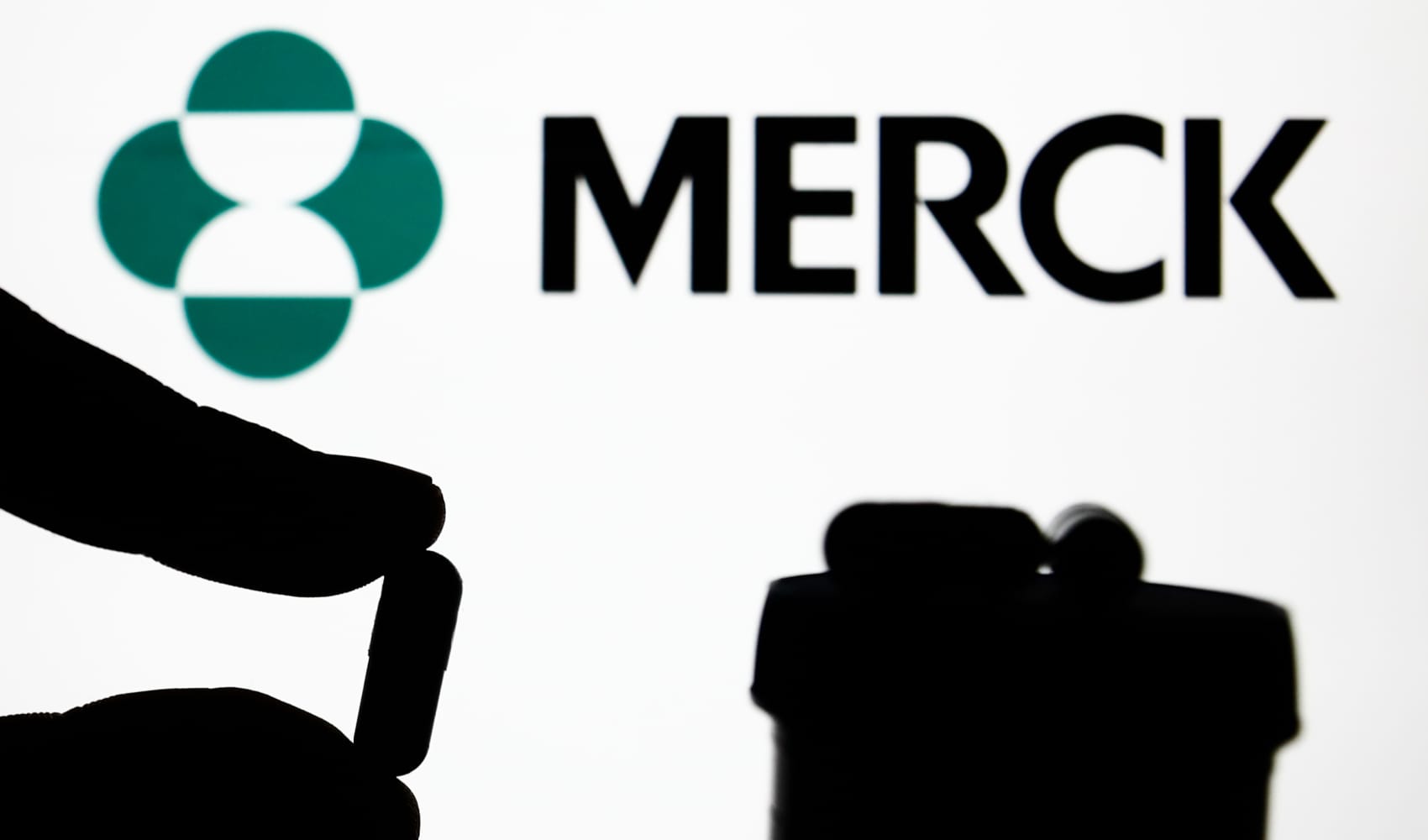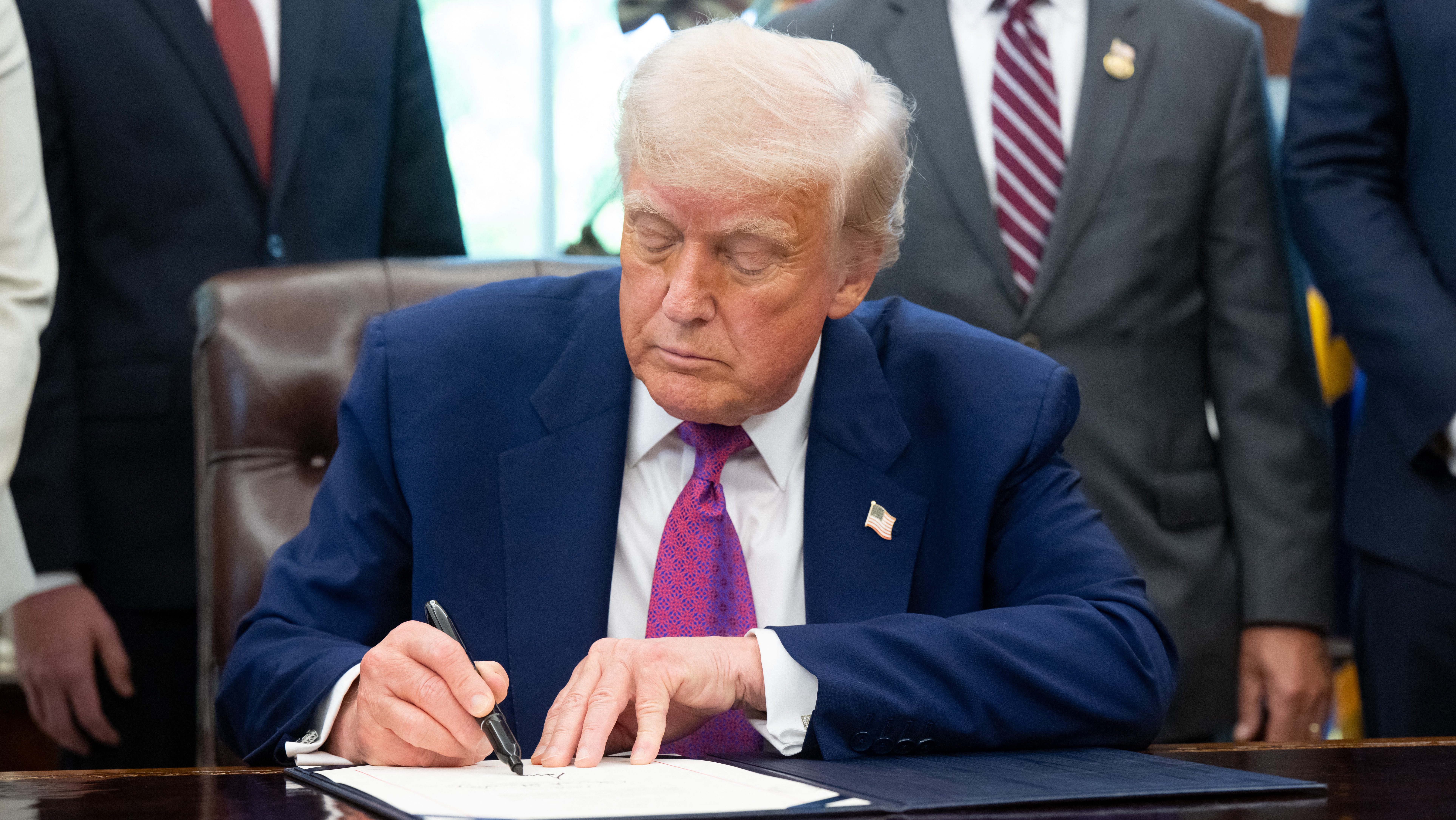Merck Lowers Profit Outlook: $200M Tariff Hit Explained
Merck's Profit Warning: Tariffs and the Bottom Line
Introduction: A Dip in the Forecast
Ever feel like you're sailing along smoothly, and then BAM! A rogue wave hits? That's kind of what's happening at Merck right now. The pharmaceutical giant recently revised its full-year profit outlook, and it's not all sunshine and roses. The culprit? A $200 million estimated hit from tariffs, along with charges tied to a licensing deal. In this article, we'll dive deep into what this means, how it affects you (even if you don't buy Merck stock), and what the future might hold for the company.
The Numbers Don't Lie: A Closer Look at the Profit Outlook
So, what exactly are we talking about here? Merck has lowered its 2025 adjusted earnings per share (EPS) forecast. They now expect earnings between $8.82 and $8.97 per share, a slight decrease from the previous range of $8.88 to $9.03 per share. It might seem like a small change, but for a company the size of Merck, that's a significant sum. This adjustment reflects the anticipated financial impact of those pesky tariffs and the aforementioned licensing agreement charge.
Tariffs: The Unexpected Headwind
Understanding the Tariff Impact
Where is this $200 million tariff burden coming from? Well, Merck says it primarily reflects levies between the U.S. and China, and other countries like Canada. It's a complex web of trade agreements (or disagreements, rather) that's impacting their bottom line. Think of it like this: tariffs are like adding extra weight to a shipment, making it harder and more expensive to get products where they need to go.
The Trump Card: Potential Future Tariffs on Pharmaceuticals
Here's a kicker: the current $200 million estimate *doesn't* even factor in the potential impact of President Trump's proposed tariffs on pharmaceuticals. That's right, there could be more financial headwinds on the horizon. If these tariffs are implemented, Merck's financial outlook could be further impacted. It's like waiting for the other shoe to drop, except this shoe might be a whole boot!
A Ray of Sunshine: Strong Q1 Performance
It's not all doom and gloom, though. Merck actually reported first-quarter revenue and profit that *beat* expectations. How's that for a plot twist? This positive performance was driven by strength in their oncology portfolio and animal health business. These areas are proving to be resilient, acting as a buffer against the negative impact of tariffs.
Oncology: A Bright Spot in the Portfolio
Keytruda's Continued Success
Keytruda, Merck's blockbuster cancer immunotherapy drug, continues to be a major growth driver. Its effectiveness in treating various types of cancer is fueling strong demand and revenue. Keytruda's success highlights the importance of innovation in the pharmaceutical industry. It’s like having a star player on your team who consistently delivers winning performances.
Animal Health: A Thriving Business
Growth in the Animal Health Sector
Don't underestimate the power of pets (and livestock)! Merck's animal health business is also performing well, providing another source of revenue growth. As pet ownership continues to rise and the demand for animal protein increases, this sector remains a valuable asset for the company. The animal health sector proves the importance of diversification for a large pharmaceutical company.
The Licensing Deal: Another Factor at Play
Beyond the tariffs, a charge tied to a recent licensing deal also contributed to the revised profit guidance. While the specifics of the deal haven't been fully disclosed in this initial announcement, it's clear that it had a financial impact. Licensing deals, while potentially lucrative in the long run, can sometimes involve upfront costs that affect short-term profitability.
Navigating the Trade War: Merck's Strategy
Mitigation Strategies
So, how is Merck planning to navigate this complex trade environment? Companies like Merck often explore various mitigation strategies, such as:
- Negotiating with suppliers to share the burden of tariffs.
- Adjusting pricing strategies in different markets.
- Seeking exemptions from tariffs.
- Diversifying their supply chain to reduce reliance on specific countries.
It's a delicate balancing act of trying to maintain profitability while ensuring access to essential medicines.
The Broader Impact on the Pharmaceutical Industry
Industry-Wide Concerns
Merck isn't alone in feeling the pressure of tariffs. The entire pharmaceutical industry is grappling with the potential impact on drug prices, supply chains, and overall profitability. Increased costs due to tariffs could eventually translate to higher prices for patients.
The Future of Drug Pricing
The debate over drug pricing is already a hot topic, and tariffs only add fuel to the fire. Will pharmaceutical companies absorb the additional costs, or will they pass them on to consumers? This remains to be seen, but it's a question that policymakers, patients, and industry leaders are all closely watching. The tariff situation puts additional pressure on an already sensitive topic of drug costs.
Investing in Innovation: A Long-Term Perspective
R&D Remains a Priority
Despite the challenges, Merck remains committed to investing in research and development (R&D). Innovation is the lifeblood of the pharmaceutical industry, and companies that prioritize R&D are more likely to thrive in the long run. Continued investments in research and development are crucial for sustained growth.
The Pipeline of New Drugs
A strong pipeline of new drugs is essential for maintaining a competitive edge. Merck is focused on developing innovative therapies in areas such as oncology, vaccines, and infectious diseases. The success of future drugs in the pipeline could offset the negative impact of tariffs and other challenges.
The Stock Market Reaction: What Investors Need to Know
Analyzing the Impact on Merck's Stock
How has the stock market reacted to Merck's revised profit outlook? Investors are closely monitoring the situation, and the stock price may fluctuate in response to news and developments related to tariffs. It's important for investors to consider both the short-term and long-term implications of tariffs when making investment decisions.
Long-Term Investment Strategies
While short-term market fluctuations can be unsettling, it's important to maintain a long-term perspective. The pharmaceutical industry is driven by innovation and the ongoing need for new and improved medicines. Companies like Merck that have a strong track record of innovation and a diversified portfolio are well-positioned to weather the storm. A diversified portfolio will always provide protection against unexpected challenges.
Beyond the Bottom Line: The Human Cost
Ultimately, the impact of tariffs extends beyond financial statements and stock prices. It affects the lives of patients who rely on Merck's medicines. Increased costs and potential disruptions to supply chains could have a real-world impact on access to healthcare. It's a reminder that trade policies have far-reaching consequences.
Conclusion: Navigating Uncertainties
Merck's revised profit outlook serves as a reminder of the complex challenges facing the pharmaceutical industry. Tariffs, licensing deals, and other factors can all impact a company's bottom line. However, Merck's strong Q1 performance and continued investment in innovation provide reasons for optimism. While the road ahead may be uncertain, Merck's commitment to developing life-saving medicines remains unwavering. The ability to innovate and adapt is key to navigating these challenges and ensuring that patients have access to the treatments they need.
Frequently Asked Questions
Here are some frequently asked questions about Merck's recent profit outlook revision:
- Why did Merck lower its full-year profit guidance?
Merck lowered its guidance primarily due to an estimated $200 million impact from tariffs and a charge related to a recent licensing deal. - What are the main sources of the tariff impact?
The tariff impact mainly stems from levies between the U.S. and China, and Canada. - Does the $200 million tariff estimate include potential tariffs on pharmaceuticals?
No, the current estimate does not account for potential future tariffs on pharmaceuticals. - What factors contributed to Merck's strong first-quarter performance?
Strength in their oncology portfolio, particularly Keytruda, and the animal health business drove the strong Q1 results. - How might tariffs impact patients?
Increased costs due to tariffs could potentially lead to higher drug prices, affecting patient access to medication.


